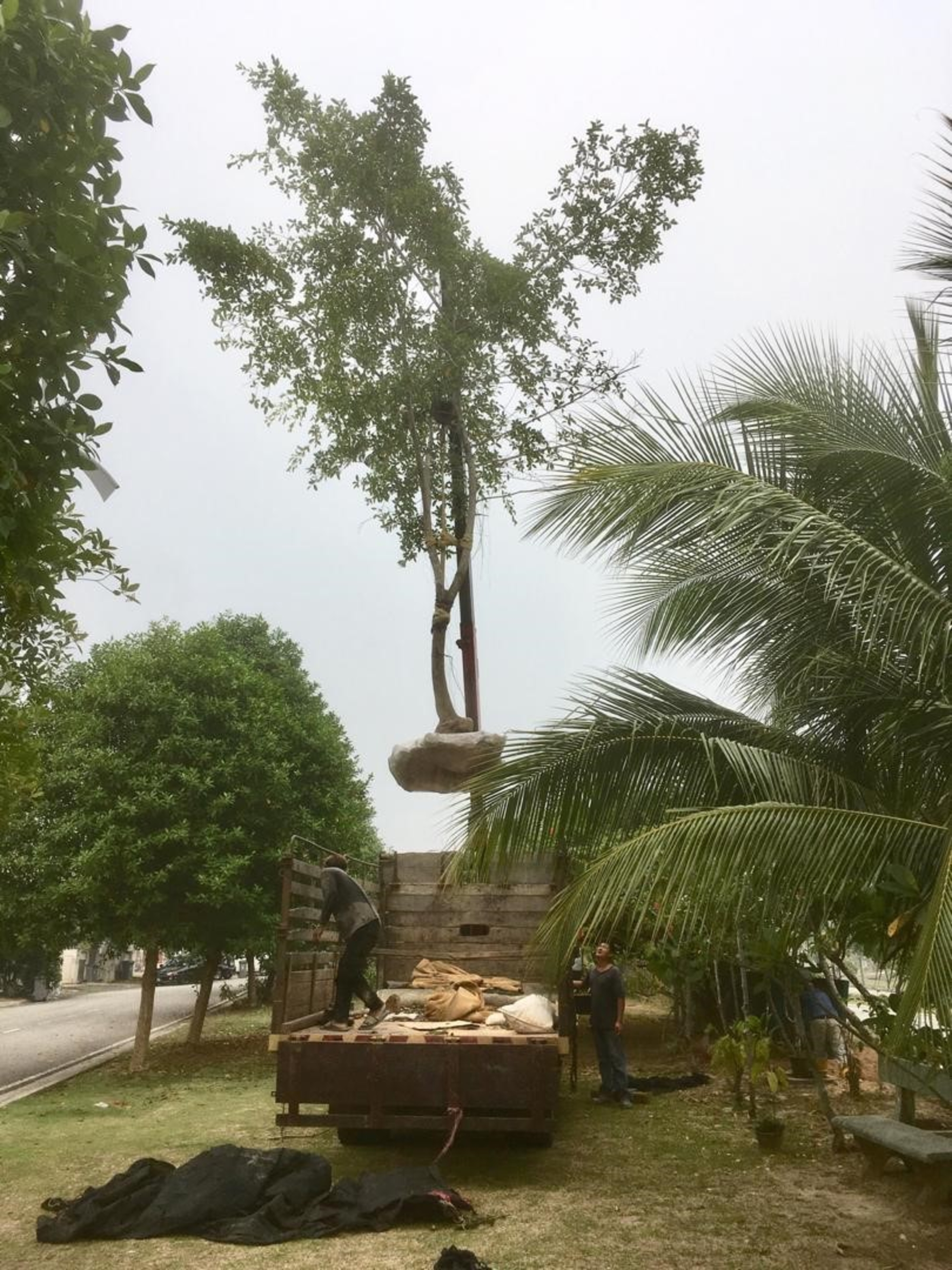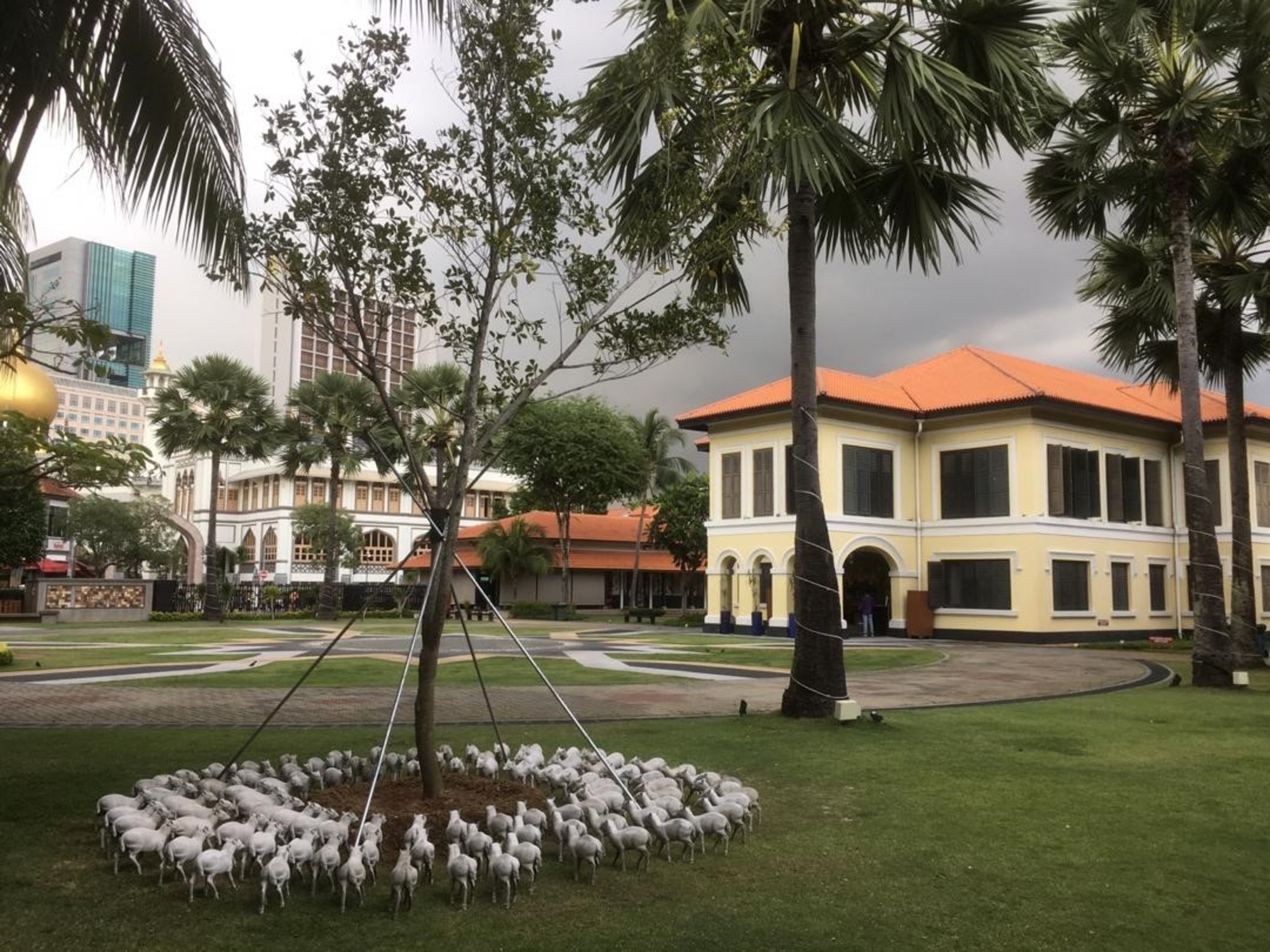Taking Root with Shooshie Sulaiman
By Tong Tung Yeng
,%20as%20part%20of%20Singapore%20Biennale%202022%20named%20Natasha.%20Image%20courtesy%20of%20Singapore%20Art%20Museum(1).jpg.jpg)
Installation view of SHOOSHIE SULAIMAN’s Kancil Mengadap Beringin (The Mousedeer Comes Before the Banyan Tree), 2019-22, multimedia installation, dimensions variable, at Singapore Biennale 2022. Courtesy Singapore Art Museum.
During her artist talk at the recently concluded Singapore Biennale 2022, “Natasha,” Shooshie Sulaiman recounted rather amusedly—if not perplexedly—an incident where the Documenta 12 committee in Germany termed her practice one of “neo-conceptualism.” Jargon like this, along with its attendant systems of understanding art and canonizing art history, read as legitimate yet alien languages. For her, understanding indigenous culture and beliefs should come from within: indigenous communities themselves working to develop languages and narratives around their own culture.
Sulaiman’s life and work thus revolve around telling a Southeast Asian-Malay story through revisiting local myths as a Malaysian artist with Malay-Chinese roots. One such character is the pohon beringin, or banyan tree, also known by much of the Malay archipelago as the tree of life. The roots of this shady giantess extend deeply in Southeast Asian Hindu-Buddhist tradition, regional Indigenous rituals, and Malay folklore.
In the artist’s project for “Natasha,” the banyan became medium and metaphor for activating indigenous knowledge and reawakening native attitude in contemporary urban life, which in Sulaiman’s view, is often too technocratic and individualistic.

Photo documentation of the banyan tree at Jenniffa’s garden in Bandar Enstek in September 2019. Courtesy the artist.

Photo documentation of the banyan tree when it was transported to Lazarus Island where it was lifted up again. Courtesy the artist.
In Malaysian shadow puppetry, the vegetal pohon beringin prop cues the beginning and end of a play: signaling the cyclic birth, demise, and rebirth of the universe. In Indigenous Balinese rituals, banyan leaves are gathered to be burnt in a post-cremation ceremony to “reawaken dead souls” for future worship. Under the care of the pohon beringin then, no one is truly forgotten.
The journey of the banyan tree in Sulaiman’s Kancil Menghadap Beringin (2019–22) embodies this samsaric principle. From a castaway plant that witnessed the proposed closure of Singapore's independent arts space The Substation, it was given a new lease of life as a cutting. As it grew in height over the years it was de-potted and transplanted into new soil, all while passing through the hands of multiple caretakers. The plant made its first public appearance, gracing the Malay Heritage Centre (MHC) with its shiny new status as an artwork, before its most recent migration to Lazarus Island where it now resides indefinitely, after the closing of “Natasha.”
In each location, the same banyan interacts and forms new relations with different communities and their lands. Constantly being uprooted and moving to new homes, the tree is a nomad, caught in an eternal cycle of meetings and partings. Maybe it is precisely the ephemerality of its (our) relationships that makes the tree’s (human's) every encounter on Earth precious.
Sulaiman remarked of the tree endearingly, “This banyan is super choosy.” Almost as if the tree’s journey is one of choice rather than chance, spaces it resides in—even but briefly—are never inconsequential. Consequently, the petanda (a prophetic sign, omen) features repeatedly in her sharings on her work. Yet another core tenet of the “Indigenous attitude,” Sulaiman impassions, is leaning into the petanda—accepting the lack of control we humans have in the face of nature, embracing uncertainty, and trusting in a natural order.

Photo documentation of the kancil sculptures before installation. Courtesy the artist.
An additional character joined the banyan’s tale. It is the small but mighty kancil (mousedeer). Funnily enough, Lazarus Island was originally known as Pulau Sakjiang Pelepah, which translates to “Island of One Barking Deer and Palms”—a petanda of sorts harkening the arrival of Sulaiman’s cement mousedeers on its shores?
The curatorial challenges of realizing Kancil Menghadap Beringin capture tensions between modern modes of working and indigenous attitudes of the petanda. The banyan could only be transported during low tide. The fragile kancil sculptures refused to arrive on-site as intact wholes. The installation was “behind schedule” and the artist had to regularly reassure concern curators, gallerists, and technicians. In answer to these “modern-day anxieties”—as Sulaiman puts it—she reiterates that forces outside her control determine the outcome of her artwork. Similarly, life, along with its opportunities or trials, has its due course: “Things [will] fall into place somehow.”

Photo documentation of two members of artist’s tulang belakang (backbone). Courtesy the artist.
Above all, the banyan gathers. Creatures—human or otherwise—seek shelter under its leafy canopy, or enlightenment from its spiritual powers. There were also members of the public who stopped by to admire the majestic pohon and delicate kancil or listen in during Sulaiman’s storytelling session. Sulaiman’s reverence for nature, drawn from attitudes of physiolatry in Indigenous traditions, is visible in her repeated invocations of how petanda has nurtured many of her present relationships and artistic opportunities.

Installation view of SHOOSHIE SULAIMAN’s Kancil Mengadap Beringin (The Mousedeer Comes Before the Banyan Tree), 2019-22, multimedia installation, dimensions variable, at Malay Heritage Centre, Singapore, 2019-2020. Courtesy the artist.

Installation view of SHOOSHIE SULAIMAN’s Kancil Mengadap Beringin (The Mousedeer Comes Before the Banyan Tree), 2019-22, multimedia installation, dimensions variable, at Singapore Biennale 2022. Courtesy the artist.
Circling back to Documenta 12 committee’s suggestion in 2007, Sulaiman’s projects fulfil several elements of postmodernist theory, such as the resistance of ideas of the Artwork or Artist as rarefied and unchanging entities; however, the impetus of her creations lies in wisdoms largely, if not entirely, Malayan. After Kancil Mengadap Beringin was installed, Sulaiman hung out with friends around Lazarus Island and took a dip with her daughter in nearby waters. Her installation gradually melts into the landscape and her memory, becoming less art than it was a part of the island.
Much like the pohon beringin, Sulaiman’s artistic practice is sentient, ever-evolving, and growing with and around the lives of real people. We’re not sure what will become of the banyan tree on Lazarus Island, but, following Sulaiman’s encouragement, we might choose to believe its next adventure or home will be no less fulfilling than its last.
Tong Tung Yeng is ArtAsiaPacific's editorial intern.







